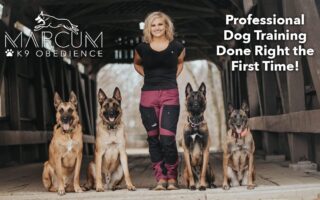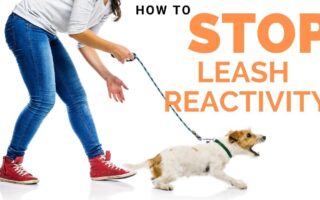In the world of canine sports, few disciplines capture the essence of a dog’s loyalty and intelligence quite like Schutzhund training. Originating in Germany, this multi-faceted sport is not merely a test of obedience but a celebration of the bond between handler and dog, intertwining elements of tracking, obedience, and protection. Each phase of training hones essential skills while fostering a deeper understanding of canine behavior, making it a compelling pursuit for both seasoned trainers and enthusiastic newcomers. As we delve into the intricacies of Schutzhund training, we will explore its history, techniques, and the invaluable lessons it offers, shedding light on its profound significance in the realm of dog training and companionship.
Table of Contents
- Understanding the Foundations of Schutzund Training
- Building a Strong Bond: Trust and Communication with Your Dog
- Essential Techniques for Effective Obedience and Protection Skills
- Nurturing a Positive Training Environment for Success
- Q&A
- In Conclusion
Understanding the Foundations of Schutzund Training
Schutzhund training is a comprehensive approach that emphasizes the development of the bond between a dog and its handler. This type of training encompasses three primary phases: tracking, obedience, and protection. Each phase works in unison to create a well-rounded canine, capable of performing various tasks under pressure. Key elements to focus on include:
- Tracking: Teaching dogs to follow scent trails while honing their natural instincts.
- Obedience: Creating a foundation of discipline and responsiveness through commands.
- Protection: Instilling confidence in dogs to protect their handler and respond to potential threats.
This training methodology not only fosters practical skills but also promotes mental stimulation and physical fitness. As handlers, it’s crucial to understand the importance of positive reinforcement and consistency in training. A well-structured training plan should include:
| Training Phase | Goals | Techniques |
|---|---|---|
| Tracking | Enhance scent work and searching abilities | Use of scent articles and track laying |
| Obedience | Establish a clear communication channel | Positive reinforcement and command repetitions |
| Protection | Build confidence and reinforce protective instincts | Controlled scenarios and staged threats |
Building a Strong Bond: Trust and Communication with Your Dog
Establishing a robust relationship with your dog is paramount, particularly when delving into specialized training like schutzhund. This style of training emphasizes the importance of forging mutual respect and understanding between handler and canine. By promoting consistent communication through verbal cues and body language, handlers can foster a sense of security and confidence in their dogs. Engaging in positive reinforcement methods not only builds trust but also encourages your dog to look to you for guidance and reassurance during exercises. The result is a partnership based on respect rather than merely obedience.
Another crucial aspect of building this bond is regular interaction outside of training sessions. Dogs thrive on companionship, and spending quality time through play or leisurely walks can tremendously enhance your rapport. Incorporate a variety of activities to keep your dog stimulated, paying attention to the nuances of their behavior and preferences. Consider utilizing the following techniques to strengthen your connection:
- Eye Contact: Establishing eye contact builds a deeper connection and enhances communication.
- Consistency in Commands: Use the same words and gestures for commands to avoid confusion.
- Daily Training Sessions: Short, focused practice reinforces skills while strengthening your bond.
As you progress in training, continually assess your dog’s responses and adjust your approach accordingly. Remember, the training process is a journey best taken together!
Essential Techniques for Effective Obedience and Protection Skills
Achieving excellence in schutzhund training requires a combination of patience, consistency, and the right practices. Starting with obedience skills is essential, as these form the foundation for more advanced protection behavior. Trainers should focus on establishing a strong bond with the dog, using positive reinforcement techniques to encourage learning and compliance. Effective methods include:
- Positive Reinforcement: Rewarding desired behaviors with treats or praise to build motivation.
- Clicker Training: Using a clicker to mark the exact moment a dog performs the desired action, aiding in quick learning.
- Short Training Sessions: Keeping practice sessions brief to maintain the dog’s interest and focus.
- Consistent Commands: Using clear, distinct commands to avoid confusion and build reliability in responses.
Incorporating protection skills into the training regimen involves specialized techniques designed to hone a dog’s instincts and capabilities. It’s vital to introduce these skills gradually, ensuring the dog is comfortable and confident at each stage. Here are some effective strategies to consider:
| Technique | Description |
|---|---|
| Controlled Aggression | Teaching the dog to display assertiveness only when commanded, ensuring they can differentiate between play and serious situations. |
| Defense Drills | Practicing scenarios where the dog must respond to a perceived threat, building their confidence and response time. |
| Desensitization | Gradually exposing the dog to different stimuli that may trigger protective instincts to prevent overreaction. |
Nurturing a Positive Training Environment for Success
Creating a conducive atmosphere for schutzhund training requires a careful balancing act of motivation, structure, and empathy. The training space should be a place where both the dog and handler feel secure and inspired to learn. This can be achieved through:
- Consistent routines: Establishing a regular schedule helps dogs know what to expect and reduces anxiety.
- Positive reinforcement: Celebrating small victories fosters confidence and encourages further enthusiasm for learning.
- Clear communication: Using consistent commands and body language aids in mutual understanding.
Additionally, fostering camaraderie among training partners can significantly enhance the experience. The strength of a supportive community plays a pivotal role in motivating individuals and their dogs to succeed. Consider implementing the following:
- Group training sessions: Sharing knowledge and experiences with fellow trainers can spark new ideas and techniques.
- Regular feedback: Constructive critique reinforces learning and helps everyone improve together.
- Celebrating progress: Acknowledging milestones, both big and small, cultivates a sense of achievement.
Q&A
Q&A on Schutzhund Training
Q1: What exactly is Schutzhund training?
A: Schutzhund training, originating from Germany, is a multifaceted dog sport that evaluates and enhances various canine skills, including tracking, obedience, and protection. It was initially developed to assess working dogs, particularly German Shepherds, for their suitability in police and military roles, but it soon evolved into a competitive sport beloved by dog enthusiasts around the globe.
Q2: What are the key components of Schutzhund training?
A: The training is divided into three core elements:
- Tracking: This involves following a scent trail and locating a hidden object. Dogs learn to use their keen sense of smell to find items at varying distances, in different terrains, and under diverse weather conditions.
- Obedience: A series of commands that foster discipline and responsiveness in the dog. This includes tasks like heeling, sitting, and performing various exercises that demonstrate the dog’s control and focus.
- Protection: In this phase, the dog learns to protect its handler through controlled scenarios that teach them to engage and respond to threats. This includes bite work and working with decoys in a safe and structured environment.
Q3: Is Schutzhund training suitable for all dog breeds?
A: While Schutzhund training predominantly features breeds known for their work ethic and intelligence—like German Shepherds, Rottweilers, and Belgian Malinois—many breeds can participate. The key is ensuring the dog’s temperament aligns with the sport’s demands, as Schutzhund requires a high level of trainability and strong instincts.
Q4: What are the benefits of engaging in Schutzhund training with your dog?
A: Schutzhund training offers a plethora of benefits, including strengthening the bond between dog and owner, providing mental stimulation and physical exercise for the dog, enhancing obedience and socialization skills, and equipping dogs with confidence and a sense of purpose. It is as much about teamwork and mental challenge as it is about the physical aspects.
Q5: How can one get started with Schutzhund training?
A: Getting started typically involves finding a reputable training club or instructor specializing in Schutzhund. Many clubs offer introductory classes that will provide owners and their dogs with foundational skills. It’s vital to ensure that training methods are positive, encouraging, and appropriate, promoting a safe and enjoyable experience for both dogs and handlers.
Q6: What should owners be aware of before beginning Schutzhund training?
A: Owners should understand that Schutzhund training is a commitment that requires time, patience, and consistent practice. The sport also promotes a strong handler-dog relationship, which is essential for success. It’s important to be aware of your dog’s personality, behavior, and health, ensuring that both you and your pet are prepared for the challenges and fun that lie ahead.
Q7: Are there any safety concerns related to Schutzhund training?
A: Yes, safety is paramount in Schutzhund training. Proper training techniques and equipment are essential to ensure the safety of both the dog and its handler. Participants should start with low-level exercises, gradually increasing the intensity as the dog becomes more proficient. Additionally, ensuring that all training is conducted under the supervision of experienced trainers helps mitigate any risks.
Q8: What is the ultimate goal of Schutzhund training?
A: Ultimately, the goal of Schutzhund training is to create a balanced and well-rounded dog capable of excelling in various tasks while strengthening the bond with its handler. Whether pursuing competitive excellence or simply enjoying the shared journey, the skills developed through Schutzhund training enhance the life of both dog and owner, fostering a mutual respect and understanding that lasts a lifetime.
In Conclusion
schutzhund training offers a unique blend of physical challenge and mental stimulation for both dogs and their handlers. This multifaceted approach not only enhances the bond between them but also instills discipline, confidence, and teamwork. As we embrace the principles of this rigorous discipline, it’s important to remember that schutzhund is not merely a test of obedience or strength; it is a celebration of the intricate relationship that canines share with humans. Whether you are a seasoned trainer or a curious newcomer, the journey through schutzhund training can lead to invaluable experiences and lessons that extend far beyond the training field. So, as you embark on this path, approach it with patience and passion, and watch as both you and your dog grow together, mastering the art of trust and communication along the way.


